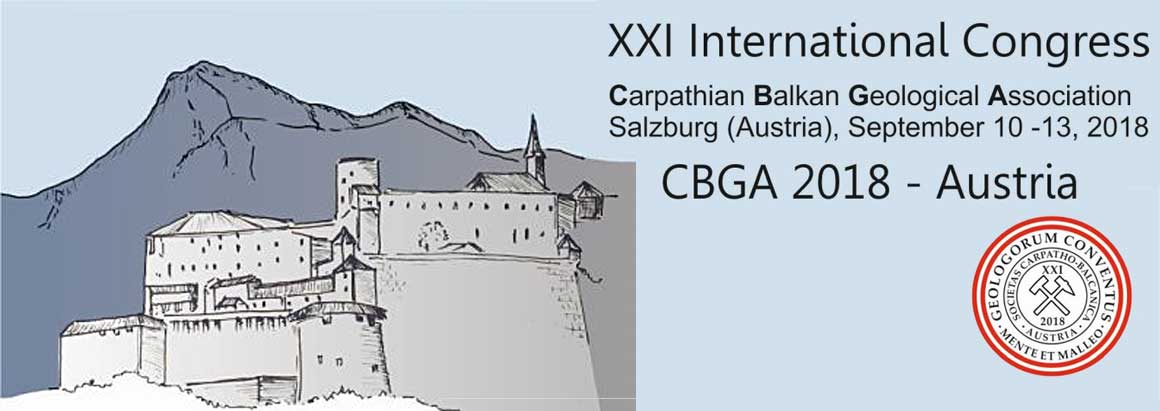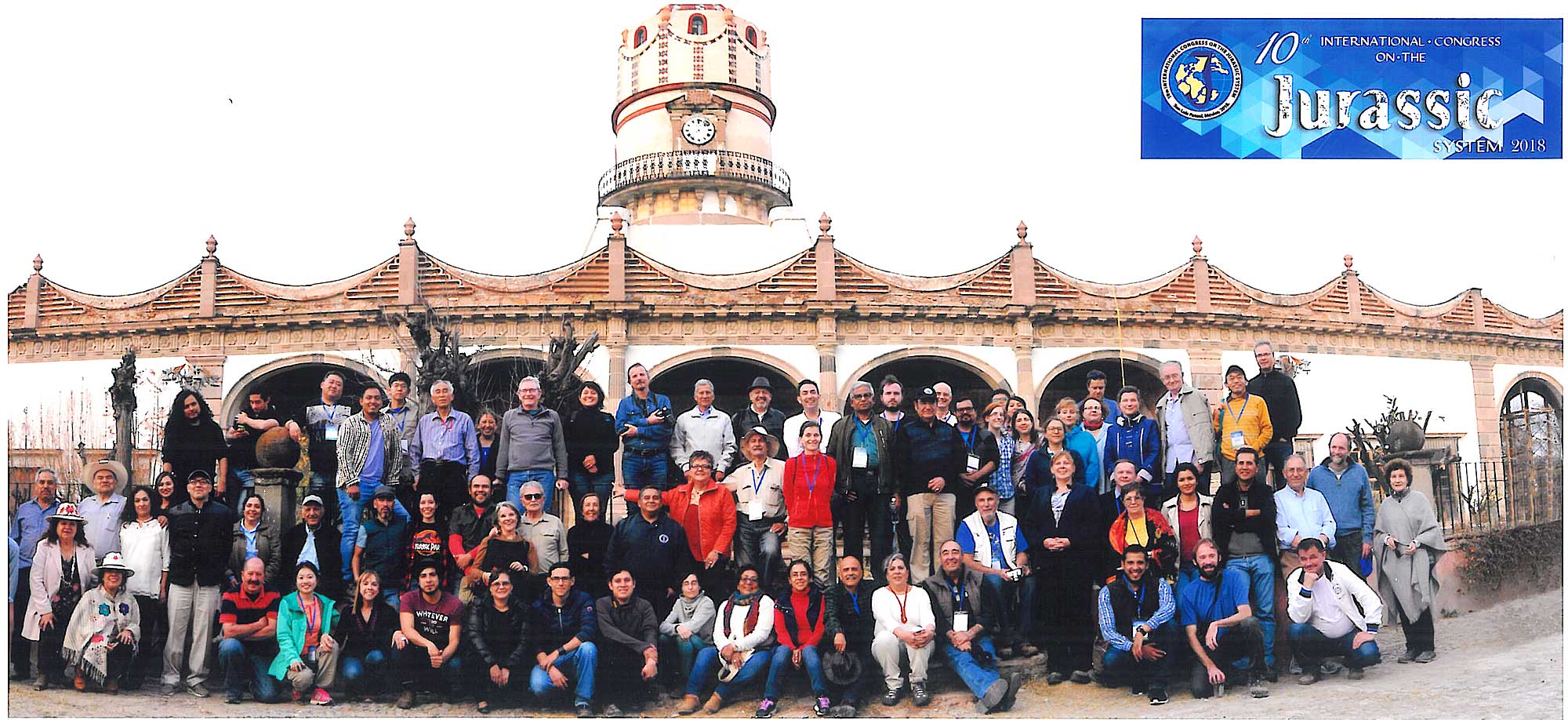The 10th International Congress on the Jurassic System, San Luis Potosi, Mexico, 4th - 10th of February 2018
REPORT FROM THE MEETING
The 10th ICJS was co-organized by the Universidad Nacional Autónoma de México (UNAM) and the Universidad Autónoma de San Luis Potosí (UASLP). Preparatory work for the congress started in 2013 and the Organising Committee had expended an enormous amount of time and resources on the organization and a complex set of arrangements. The Congress sessions were all held at the Centro Cultural Bicentenario of the Universidad Autónoma de San Luis Potosí, Mexico. The theme chosen for the Congress was “Marine and Non-marine Jurassic Systems”, organized with a variety of 10 scientific sessions:
1) Marine and non‐marine Jurassic boundaries and stratotypes;
2) Biostratigraphy, sequence stratigraphy, isotopic stratigraphy, magnetostratigraphy, and cycle stratigraphy of the Jurassic;
3) Biodiversity dynamics and evolution of Jurassic life;
4) Depositional facies, palaeogeography and environmental change and ecosystem reconstruction in the Thethys sea;
5) Jurassic paleoclimate, paleoatmospheric circulation, and CO2 atmospheric levels;
6) Biotic, climatic and ocean chemistry effects of CAMP;
7) Major bio- and geological events of the Jurassic, their causes and mechanics;
8) Mineral and energy recourses (oil, gas and coals, etc) of Jurassic deposits;
9) Gulf of Mexico - Caribbean evolution, and Jurassic source rocks and reservoirs;
10) Jurassic Geoparks and museums: their roles in geological relic protection and public education.
Altogether, 81 delegates from 16 countries participated in the Congress and 77 oral and 15 poster presentations were given, triggering many interesting debates.
Participants of The 10th International Congress on the Jurassic System 2018, San Luis Potosi
As usual, an important topic of each Jurassic Congress is advance in defining missing GSSPs (Global Stratotype Section and Points). A separate session was devoted to the base-Callovian issue, mainly regarding the historical proposed boundary stratotype for the Callovian Stage at Albstadt-Pfeffingen, Germany. An extremely important part of any Jurassic Congress is the field excursion programme before and after the Congress. Pre- and post-Congress field trips offered us a splendid opportunity for expanding our knowledge and experience.
The field trips included:
- Paleoenvironment and biostratigraphy of the upper Sinemurian (Lower Jurassic) of east‐central Mexico. Leader - Carlos Esquivel Macias.
- The Hettangian‐Sinemurian record of NW Sonora. Leaders - Carlos González León and Timothy Lawton.
- Two canyons through the Jurassic: Sedimentological and Paleontological records of Oaxaca, southern Mexico. Leaders: Patricia Velazco and Michelangelo Martini.
- Early Jurassic volcanic‐sedimentary remnants at the ancient western equatorial margin of Pangea and the Late Jurassic epicontinental shelf of the Central Mexico Mesozoic Basin: Zuloaga and La Caja formations in northern México, San Luis Potosí and Zacatecas. Leaders: Ana Bertha Villaseñor, Rafael Barboza, Federico Olóriz.
- Gulf of Mexico rift to drift transition recorded in Chiapas. Leader: Roberto Molina Garza.
Additionally, the Mid-Congress excursion to the Joya Honda maar was offered, followed by memorable Mexican Ranch Party at Peotillos Hacienda.
A special volume for 15 to 20 works presented at the congress, related to the American Jurassic will be published by Journal of South American Earth Science.
At the closure ceremony of the Congress, the Delegates expressed their support for the inclusion of “Volumina Jurassica”, our open access journal supported by ISJS, in the coveted listing of ISI/Web of Science. Then, Josef Pálfy (past ISJS chair) presented Budapest as the venue for the 11th Jurassic Congress in 2022. This proposal was received very positively and after three congresses held in Asia and America, the next Jurassic Congress will return to Europe.
The organizing committee, chaired by Ana Bertha Villaseñor, spared no expense to make us feel welcome and to enable an excellent and successful Congress to be held. Our hosts introduced us not only to the Jurassic geology of Mexico, bringing home to delegates the pivotal role of Mexican Jurassic in understanding Jurassic biogeography, but they also took all the opportunities to show us natural beauty, fascinating history and cultural richness of this great country.
Grzegorz Pieńkowski
see also:







